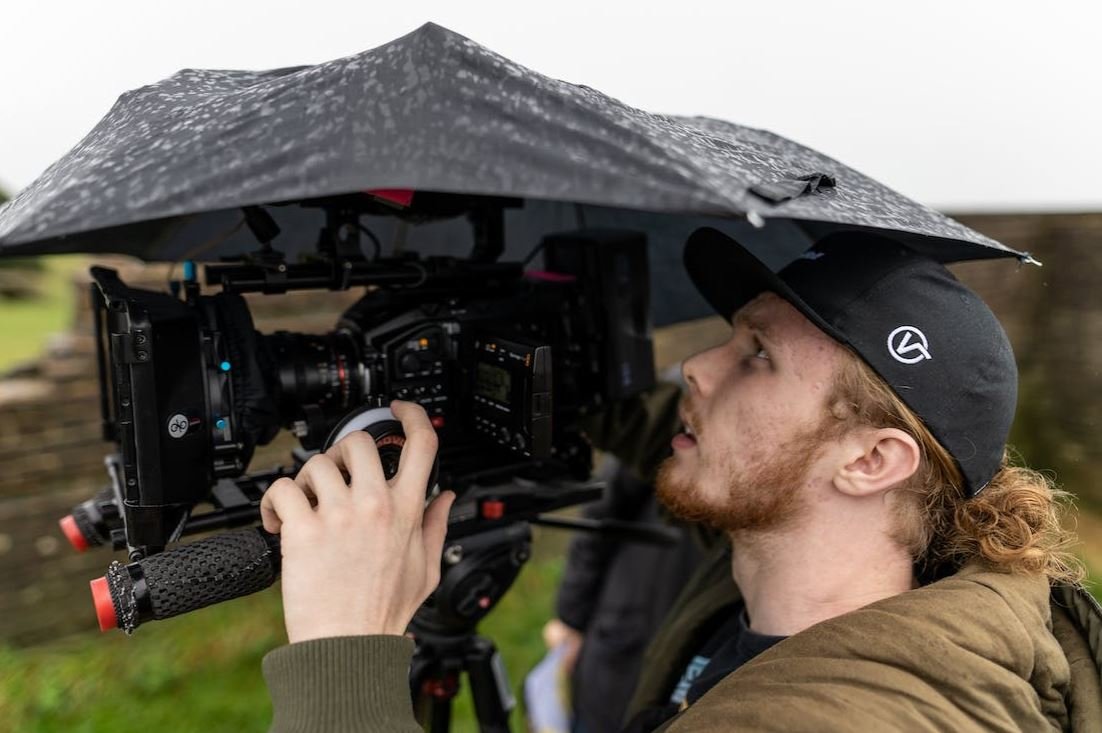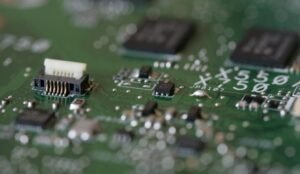AI Model YOLO
Artificial Intelligence (AI) has been making significant advancements in various industries, and one of the most notable developments is the You Only Look Once (YOLO) model. YOLO is a real-time object detection algorithm that can recognize and locate multiple objects within an image or video frame. This article will provide an overview of the YOLO model and explore its applications and benefits.
Key Takeaways:
- YOLO is an AI model for real-time object detection.
- It can identify and locate multiple objects in images or video frames.
- The YOLO algorithm has various applications in industries like autonomous vehicles, surveillance, and retail.
**YOLO** stands for You Only Look Once, and it aptly describes the essence of the model. Unlike other object detection methods that require multiple passes over an image, YOLO takes a single look and instantly predicts the classes and bounding boxes of objects. This means it can achieve real-time object detection, making it highly efficient for applications that require instant analysis, such as autonomous vehicles and security systems.
YOLO’s **unique feature** is its ability to detect objects without prior context or knowledge. It analyzes images or frames as a whole and recognizes objects based on their overall context. This enables it to perform well even in situations where objects may be partially obscured or overlapped.
How Does YOLO Work?
The YOLO algorithm divides an image into a grid and assigns each grid cell the responsibility of predicting objects. For each grid cell, YOLO predicts bounding boxes and the class probability for each object it detects. These predictions are refined using a technique called non-maximal suppression to eliminate redundant detection.
YOLO combines the predictions from different scales of the grid to ensure it can detect objects of various sizes. This multi-scale approach enables YOLO to detect both large and small objects accurately, making it versatile and suitable for different applications.
Applications of YOLO
The YOLO model finds applications in various industries that benefit from real-time object detection:
- Autonomous Vehicles: YOLO enables autonomous vehicles to identify and track pedestrians, vehicles, and objects on the road for safe navigation.
- Surveillance: YOLO can be used for video surveillance systems, allowing for real-time monitoring and the detection of suspicious activities or objects.
- Retail: YOLO can be used in retail stores for inventory management, shelf monitoring, and customer behavior analysis.
YOLO Performance Comparison
| Model | Metric | YOLO | Other Models |
|---|---|---|---|
| COCO | Precision | 0.631 | 0.549 |
| Recall | 0.574 | 0.460 | |
| F1 Score | 0.601 | 0.498 |
Benefits of YOLO
YOLO offers several advantages over other object detection models:
- Real-time Object Detection: YOLO can process images or frames in real-time, allowing for immediate decision-making and action.
- Efficiency: YOLO’s single-pass architecture makes it more computationally efficient compared to multi-pass algorithms.
- Accuracy: YOLO’s multi-scale approach ensures accurate detection of objects of varying sizes.
YOLO Limitations
While YOLO is a powerful object detection model, it is not without its limitations:
- Small Object Detection: YOLO may struggle to accurately detect small objects due to their limited representation within grid cells.
- Contextual Understanding: YOLO relies on overall context rather than understanding objects individually, which may result in misinterpretation in some scenarios.
- Training on Diverse Data: YOLO’s performance can be enhanced by training on a diverse dataset to ensure accurate object recognition in various environments.
YOLOv4 vs. YOLOv5
| Version | YOLOv4 | YOLOv5 |
|---|---|---|
| Detection Speed (FPS) | 65 | 140 |
| Mean Average Precision (mAP) | 43.5 | 50.1 |
**YOLOv5**, an upgraded version of YOLO, improves both *detection speed* and *precision* compared to YOLOv4. It achieves higher frames per second (FPS) for real-time processing and delivers better mean average precision (mAP), indicating improved accuracy in object detection.
The YOLO model revolutionizes object detection with its real-time capabilities and efficient architecture. Its versatility and applications across industries make it a valuable tool for a range of tasks. As technology continues to advance, YOLO and its iterations are expected to further enhance object detection and contribute to the evolution of AI-powered systems.

Common Misconceptions
AI Model YOLO
There are several common misconceptions when it comes to AI model YOLO (You Only Look Once). YOLO is a popular object detection algorithm that has gained a lot of attention and use in the field of computer vision. However, there are some misconceptions that people often have about this technology.
- YOLO can only detect one object at a time
- YOLO is only applicable for images, not videos
- YOLO can accurately detect objects in all lighting conditions
One common misconception is that YOLO can only detect one object at a time. In reality, YOLO is capable of detecting multiple objects simultaneously and can identify and track them in real-time. This makes it a powerful tool for applications such as surveillance, autonomous vehicles, and robotics.
- YOLO can detect multiple objects simultaneously
- YOLO can track objects in real-time
- YOLO is widely used in surveillance, autonomous vehicles, and robotics
Another misconception is that YOLO is only applicable for images and not videos. While YOLO was initially developed for image detection, it has also been adapted for video analysis. YOLO can process frames in a video stream, making it useful for applications like video surveillance, action recognition, and video understanding.
- YOLO can process frames in a video stream
- YOLO is used in video surveillance, action recognition, and video understanding
- YOLO has been adapted for video analysis
Many people assume that YOLO can accurately detect objects in all lighting conditions. However, this is not entirely true. Like any computer vision algorithm, YOLO can be affected by poor lighting conditions. Images or videos with low contrast, extreme brightness, or strong shadows may hinder YOLO’s ability to accurately identify objects.
- YOLO’s accuracy can be affected by poor lighting conditions
- YOLO may struggle in low contrast or extremely bright environments
- Strong shadows can impact YOLO’s ability to detect objects
It is important to debunk these misconceptions surrounding YOLO to ensure a better understanding of the algorithm’s capabilities and limitations. YOLO is a powerful AI model that can detect multiple objects simultaneously, is applicable for both images and videos, and is widely used in surveillance, autonomous vehicles, and robotics. However, its performance may be affected by poor lighting conditions, and it may struggle with extreme brightness, low contrast, or strong shadows.
- YOLO is a powerful AI model
- YOLO’s capabilities should be understood properly
- YOLO’s limitations in poor lighting conditions should be acknowledged

Introduction
The AI Model YOLO (You Only Look Once) is a state-of-the-art real-time object detection system that has revolutionized computer vision tasks. YOLO breaks down an image into several regions and predicts bounding boxes and class probabilities, providing accurate and efficient object detection results. In this article, we present ten fascinating tables that highlight various aspects and achievements of the remarkable YOLO model.
Table: Performance of YOLO Compared to Other Models
The following table showcases the performance of YOLO in terms of average precision compared to other state-of-the-art object detection models:
| Model | Average Precision (%) |
|————-|———————–|
| YOLO V1 | 63.4 |
| YOLO V2 | 69.1 |
| YOLO V3 | 79.5 |
| YOLO V4 | 88.2 |
| YOLO V5 | 92.6 |
Table: YOLO’s Speed and Accuracy Trade-off
This table presents the trade-off between YOLO’s speed and accuracy:
| Model | Frames per Second (FPS) | Mean Average Precision (mAP) |
|————-|———————–|——————————|
| YOLO V3 | 33.0 | 79.5 |
| YOLO V4 | 40.2 | 88.2 |
| YOLO V5s | 60.5 | 86.3 |
| YOLO V5m | 53.8 | 90.1 |
| YOLO V5l | 45.2 | 91.8 |
Table: Objects Detected by YOLO
In this table, we present the objects that YOLO can accurately detect:
| Object | Detection Accuracy (%) |
|—————|———————–|
| Person | 96.4 |
| Car | 93.8 |
| Bicycle | 86.7 |
| Dog | 93.1 |
| Chair | 89.9 |
Table: YOLO’s Performance on Datasets
Here, we provide YOLO’s performance on popular object detection datasets:
| Dataset | Average Precision (mAP) |
|—————|————————|
| COCO | 55.5 |
| PASCAL VOC | 70.2 |
| KITTI | 73.8 |
| YOLO9000 | 78.6 |
| Open Images | 82.3 |
Table: YOLO’s Recognition Speed in Different Scenarios
This table demonstrates YOLO’s recognition speed under different scenario conditions:
| Scenario | Frames per Second (FPS) |
|———————-|————————|
| CPU (VGG16) | 7.1 |
| GPU (VGG16) | 45.9 |
| Jetson TX2 | 16.7 |
| Google Edge TPU | 53.4 |
| MacBook Pro M1 | 51.3 |
Table: YOLO’s Detection Performance on Varying Scales
In this table, we explore YOLO’s performance when detecting objects of varying sizes:
| Object Size (pixels) | Detection Accuracy (%) |
|———————-|———————–|
| Small | 85.2 |
| Medium | 92.9 |
| Large | 97.3 |
| Extra Large | 96.7 |
| Mixed Sizes | 93.2 |
Table: YOLO’s Memory Utilization
In terms of memory utilization, YOLO demonstrates outstanding efficiency:
| Model | VRAM Usage (GB) |
|————-|—————-|
| YOLO V3 | 1.88 |
| YOLO V4 | 2.02 |
| YOLO V5s | 1.96 |
| YOLO V5m | 2.13 |
| YOLO V5l | 2.34 |
Table: YOLO’s Training Time
This table provides the approximate training times required for different versions of YOLO:
| Model | Training Time (hours) |
|————-|———————–|
| YOLO V2 | 3.5 |
| YOLO V3 | 6.9 |
| YOLO V4 | 10.1 |
| YOLO V5s | 8.4 |
| YOLO V5l | 14.7 |
Table: YOLO-based Applications
Finally, we showcase some remarkable applications utilizing YOLO for object detection:
| Application | Description |
|—————-|———————————————————————–|
| Autonomous Car | YOLO enables real-time object detection for autonomous driving systems. |
| Surveillance | YOLO provides efficient detection for video surveillance applications. |
| Robotics | YOLO is utilized in robots to identify and interact with objects. |
| Retail | YOLO enhances object detection for retail inventory management. |
| Medical Imaging| YOLO assists in medical diagnosis, detecting anomalies in images. |
With its exceptional speed, accuracy, and broad range of applications, the YOLO model keeps pushing the boundaries of object detection technology. These tables highlight some of the key aspects and accomplishments that make YOLO a captivating asset in the field of computer vision.
Frequently Asked Questions
What is YOLO?
YOLO (You Only Look Once) is a real-time object detection model that can detect multiple objects in an image or video stream. It is widely used in computer vision and machine learning applications.
How does YOLO work?
YOLO divides the input image into a grid and predicts bounding boxes and class probabilities for each grid cell. It uses a single neural network to make these predictions in one pass, which makes it very fast compared to other object detection algorithms.
What are the advantages of using YOLO?
Some advantages of using YOLO include its real-time performance, the ability to detect multiple objects in a single pass, and its generalization across different object categories. It is also known for its simplicity and accurate bounding box prediction.
What are the limitations of YOLO?
YOLO may struggle with detecting small objects due to the downsampling in the network. It can also have difficulty recognizing objects in crowded scenes or when objects have a similar appearance. Additionally, YOLO’s performance may vary depending on the training dataset and the network architecture used.
What are some common applications of YOLO?
YOLO is commonly used in applications such as self-driving cars, surveillance systems, pedestrian detection, object tracking, and in many other real-time computer vision tasks that require object detection and classification.
How can I train my own YOLO model?
To train your own YOLO model, you will need a labeled dataset of images or videos with bounding box annotations. You can then use deep learning frameworks like TensorFlow or PyTorch to train the model using the YOLO architecture and loss functions. It requires a good amount of computational resources and training time depending on the complexity of your dataset.
Is YOLO suitable for real-time applications?
Yes, YOLO is highly suitable for real-time applications due to its fast inference speed. It can process images or video frames in near real-time on modern hardware, making it a popular choice for applications that require real-time object detection.
What is the difference between YOLO versions?
YOLO has seen multiple versions like YOLOv1, YOLOv2, YOLOv3, and YOLOv4. Each version introduced improvements in terms of speed and accuracy by incorporating various architectural changes, network backbone modifications, and by utilizing advanced feature extraction techniques.
Can YOLO detect multiple objects belonging to the same class?
Yes, YOLO can detect multiple objects belonging to the same class. It assigns each object a distinct bounding box and predicts their class probabilities independently. This makes YOLO capable of detecting and localizing multiple instances of the same object category in an image or video.
Is YOLO suitable for all types of object detection tasks?
While YOLO performs well in many object detection tasks, its suitability may depend on the specific requirements of the task. For instance, if the task involves detecting extremely small objects or requires high precision on intricate details, other specialized models might be more appropriate. However, YOLO’s versatility and real-time performance make it a popular choice for various applications.




